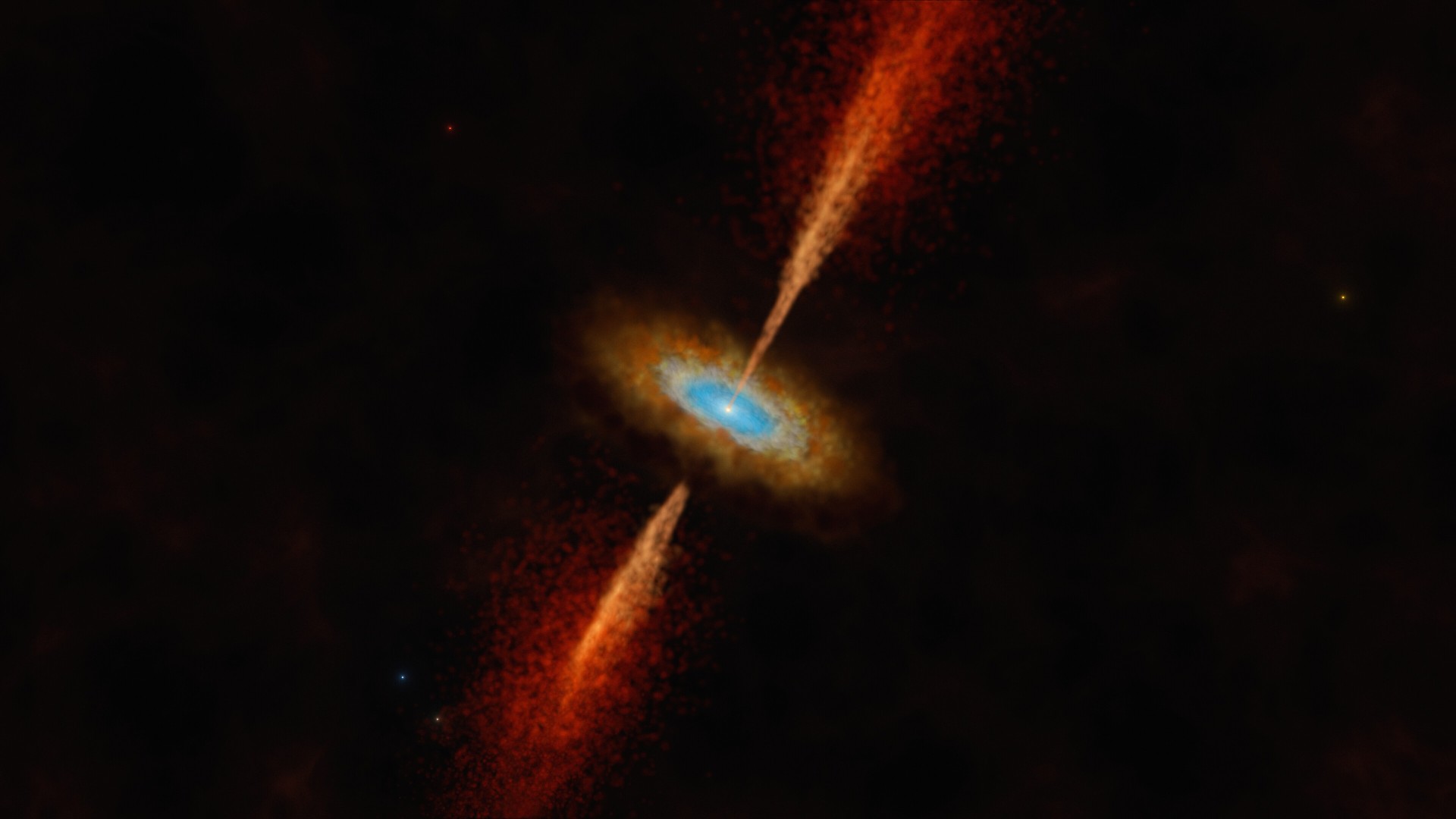Scientists just found a planet-forming disk beyond our Milky Way for the 1st time — yes, they're thrilled
Astronomers have spotted an accretion disk feeding matter to a young star and helping it grow in a galaxy outside the Milky Way for the first time.

Astronomers have discovered the first example of a swirling disk of material feeding a young star located in a galaxy outside the Milky Way. The disk is near-identical to those found around infant stars in the Milky Way and suggests that stars and planets form in other galaxies just as they do in our own.
The young star in question is located in the Large Magellanic Cloud — a neighboring galaxy to the Milky Way located 160,000 light-years away — and its system, designated HH 1177, is embedded in a massive cloud of gas.
The team behind this discovery observed the system with the Atacama Large Millimeter/submillimeter Array (ALMA), the largest astronomical project on Earth consisting of 66 antennas in Northern Chile that make up a single radio telescope.
"When I first saw evidence for a rotating structure in the ALMA data, I could not believe that we had detected the first extragalactic accretion disc. It was a special moment," researcher lead author and Durham University scientist Anna McLeod said in a statement. "We know discs are vital to forming stars and planets in our galaxy, and here, for the first time, we're seeing direct evidence for this in another galaxy."
McLeod and colleagues were tipped off to the existence of this system when the Multi Unit Spectroscopic Explorer (MUSE) instrument on ESO's Very Large Telescope (VLT) spotted a jet emerging from a forming star. This instrument can make observations in the visible wavelength range while also measuring the wavelengths of light coming from an object, allowing scientists to tell what types of matter they're looking at.
"We discovered a jet being launched from this young massive star, and its presence is a signpost for ongoing disc accretion," McLeod added. To confirm an accretion disk was present in HH 1177, the scientists had to measure the movement of dense gas around the star.






















